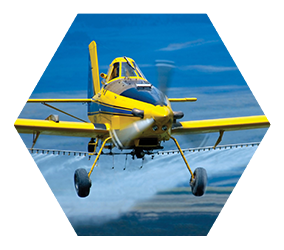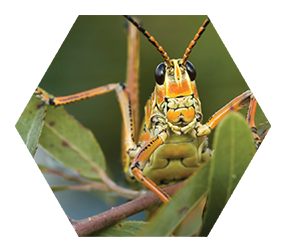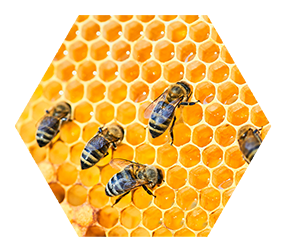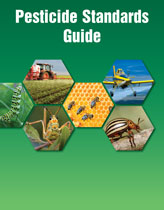Click "Allow Cookies" to consent to storing cookies on your device to improve your experience on our site. Learn more.
AccuStandard | Pesticide Standards
AccuStandard offers a wide range of neat, or single and multiple component solution Certified Reference Materials (CRMs) that will help meet your lab's needs for Pesticide testing. Our product line for pesticide products includes thousands of high-quality CRMs that meet the requirements of test methods published by different regulatory bodies and regions such as USEPA, ASTM, Canada, Europe and Asia. Also included are calibration mixtures that can be used for a wide range of residual pesticide analysis in different matrices such as fruit, vegetables and cannabis.
Choose from over 1200 individual pesticide and herbicide compounds. You can search our website by CAS number to find the CRM you need.
Pesticide Categories
Use the links below to navigate to specific types of Pesticides.
ASTM Methods
EPA Methods
International Methods
Pesticides in Cannabis
Carbamates
Organophosphates
Triazines and Triazinones
Neonicotiniods and Fipronils


ASTM D7600 - Determination of Aldicarb, Carbofuran, Oxamyl and Methomyl by LC-MS/MS
ASTM D7645 - Determination of Pesticides in Water by LC-MS/MS
ASTM D7645 has been developed by USEPA region 5 through ASTM D19 committee to help in the qualitative and qualitative determination of Aldicarb, Aldicarb sulfone, Aldicarb sulfoxide, Carbofuran, Methomyl, Oxamyl and thiofanox in water samples using LC-MS/MS.
ASTM D8025 - Determination of Pesticides in Water
ASTM D8025 has been developed by ASTM D19 committee on Water for the determination of pesticides in water. Our D-8025 CRM is designed to include all the 27 native pesticides in Acetonitrile for efficient and reliable analysis.


The US Environmental Protection Agency (USEPA) along with other international regulatory bodies have published many test methods for the analysis of pesticides. AccuStandard offers a comprehensive product line of CRMs to test for pesticides that are designed for EPA Methods 505, 508, 525, 614, 8080, 8140, 8141, 8270, and more.


Testing the quality and safety of cannabis and cannabis related products is important for both medicinal and recreational users. As part of the cannabis cultivation process, pesticides are applied regularly to improve yield by controlling pest growth. Hence, testing for residual pesticides in cannabis has become essential to reduce consumer’s exposure to these toxins. Our pesticides standards product line offers a comprehensive selection of CRMs specifically designed to help meet the requirements for pesticides residual analysis in cannabis. It includes CRMs for ASTM test method D8399 as well as state specific CRMs for the states of CA, CO, CT, FL, MD, MA, MI, NY, NV, OK, PA.


The N-methyl carbamate esters, also known as Carbamates, are chemical compounds that are commonly used as an insecticide applied to crops for the control of insects. Human exposure to these chemicals can come through the consumption of contaminated vegetables, fruits or drinking water. Some carbamates such as Aldicarb, Carbaryl, Carbofuran, Methomyl and Thiocarb are known for its toxic impacts on the human nerve system. Reliable identification of these contaminants is critical to minimize the general public exposure to these chemicals.


Also known as (OP) pesticides, Organophosphates is a class of chemical compounds that are widely used as a pesticide not only in agricultural but also commercial and residential applications. Being an enzyme inhibitor, Organophosphates are able to kill insects by disrupting the nerve system which makes these chemical classified as neurotoxins. Organophosphates pose a major risk to human especially pregnant women and children due to its ability to negatively impact neurological developments. Human exposure to Organophosphates such as Diazinon, Mevinphos and Tetraethyl pyrophosphate is linked to different adverse health effects such as loss of memory, weakness and headache. As a result, identifying Organophosphates residual and contaminants is important to reduce exposure to these chemicals.


Triazine herbicides are the most heavily used agricultural chemicals in the United States. They are used to control broadleaf weeds primarily for corn and soybeans.
A number of studies have shown that atrazine is an endocrine disruptor, causing damage to reproductive systems in frogs, fish and other wildlife. Potential health hazards to people and a negative environmental impact lead to the banning of atrazine in the European Union (EU) in 2005.
The controversy over potential human health hazards, resulting from the use of atrazine and other triazine herbicides has renewed an interest in analyzing these compounds.


Neonicotinoid Standards
Neonicotinoids are linked to the decline of honeybees and are a contributing factor in colony collapse disorder (CCD). Toxicity levels may not kill bees directly; low level exposures may limit the ability of honeybees to forage, collect pollen and return to their hive. Besides direct contamination, Neonicotinoid exposure can be from dust, pollen and/or nectar.
Fipronil Standards
Fipronil is also linked to the decline of honeybees. Fipronil is in the phenyl pyrazole class of pesticides and is a broad-spectrum insecticide used in commercial products such as flea and tick control pet collars. Fipronil metabolites are more toxic to organisms than the parent compound. Anaerobic metabolism in soil results in Fipronil sulfide, oxidative degradation in soil results in the metabolite Fipronil sulfone, and photodegradation results in the formation of a very persistent metabolite, Fipronil desulfinyl.
Need Assistance with Pesticide Standards?
To find additional Pesticide Standards, you can shop our full selection here.
If you still don’t see what you are looking for, reach out to techservice@accustandard.com and we can make a recommendation or create a custom product for you.



